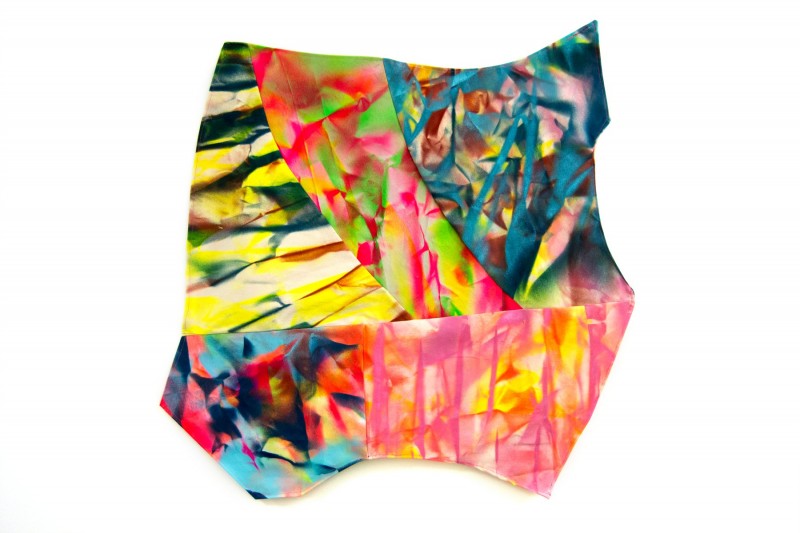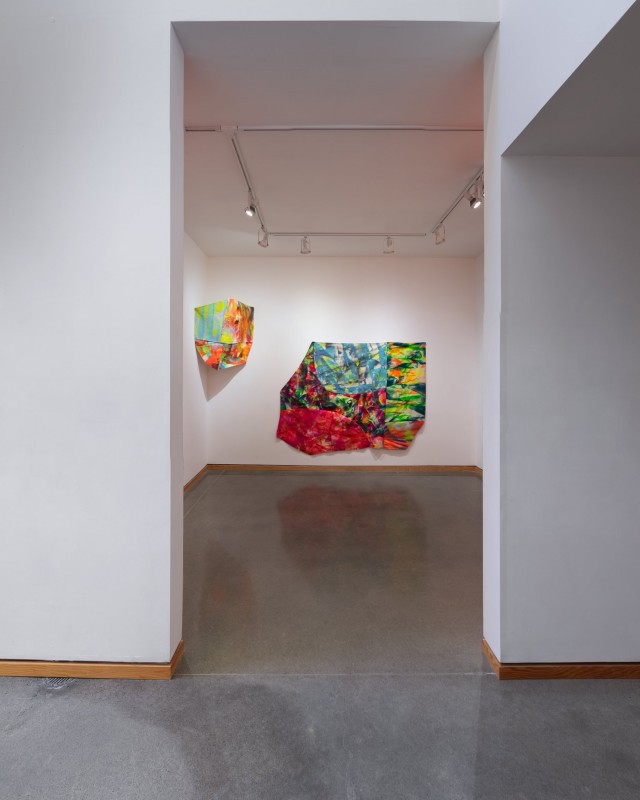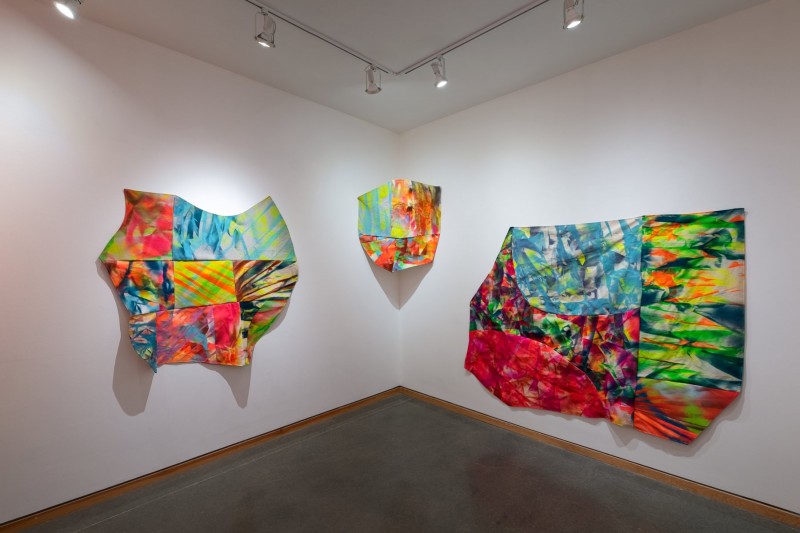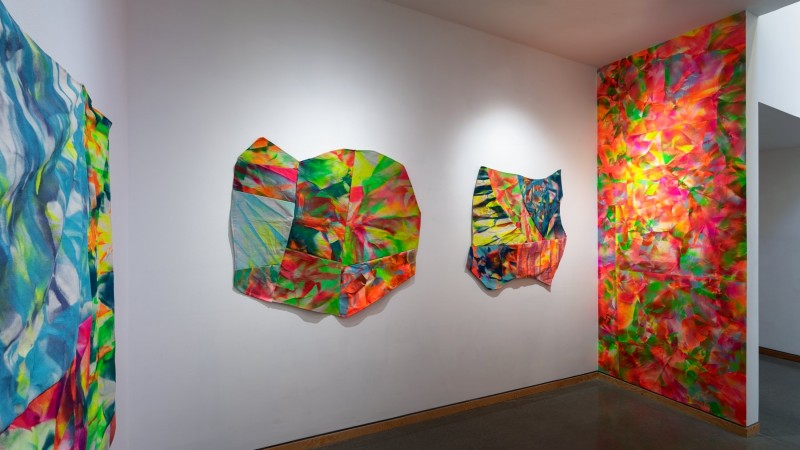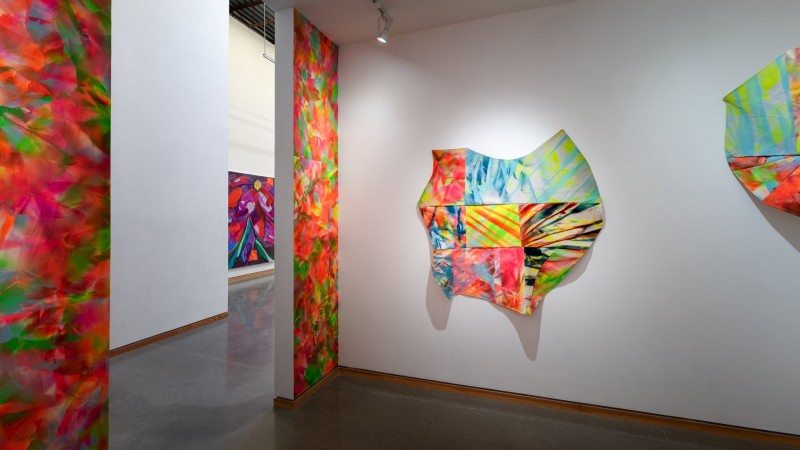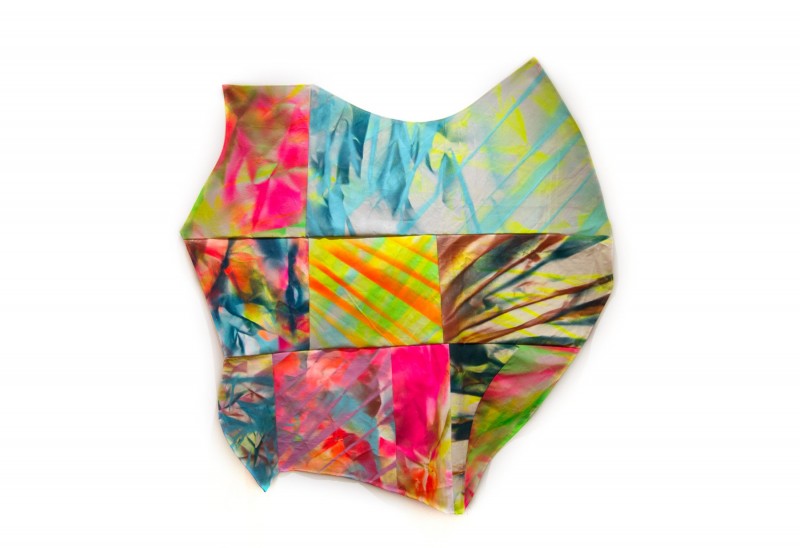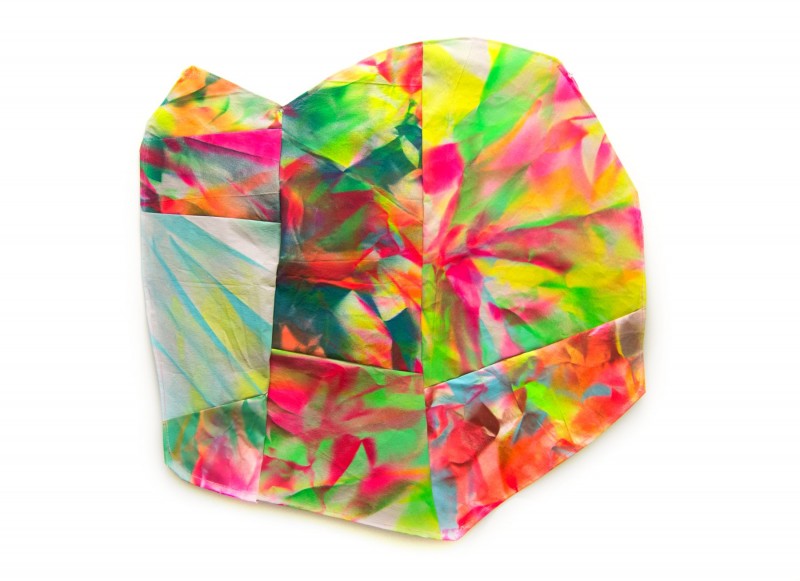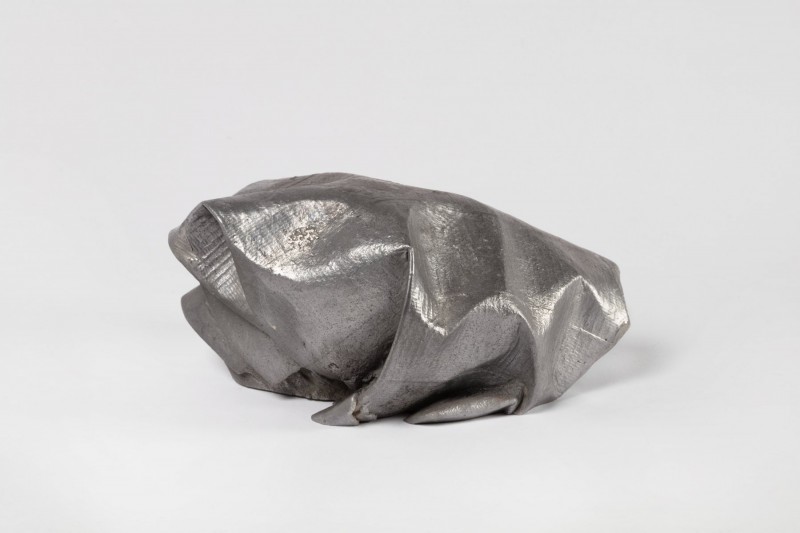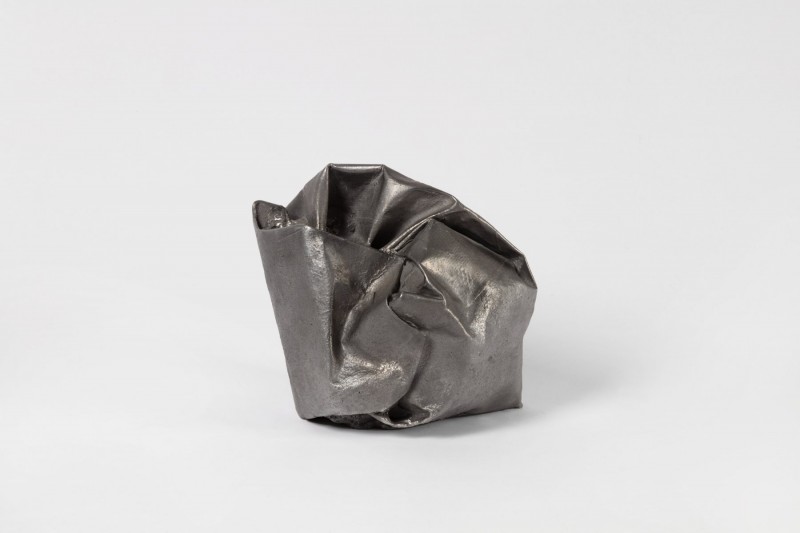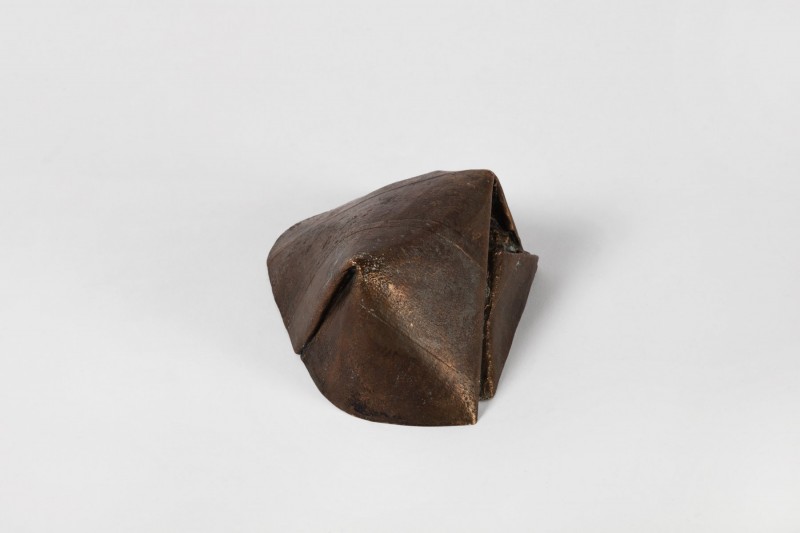ANGELL GALLERY is pleased to present Tie-Dye for Germans, the first solo exhibition with the gallery by Toronto-based Janine Miedzik. Bringing together new wall-mounted canvas and sculptural works, the exhibition runs in the Project Space from February 1 to March 7, 2020, with an opening reception on February 8, 2020 at 2:00 p.m.
Those who braved the cold and skated the newly opened ice rink under the Bentway back in 2018 may recall a series of brightly coloured abstract sculptures lining the path. The work of painter, sculptor and installation artist Janine Miedzik, the pieces playfully mimicked the construction notice signs that have become all-too-familiar to Torontonians. However, rather than warning us of dangers or changes in our usual travel routes, Miedzik's signs referenced the history of hard-edged abstract paintings while also playing with ideas around how we navigate urban space. They also brightened a cityscape that can feel oppressively grey come February.
Miedzik's art practice has long been shaped by the built environment, as well as the materials she's come across when working as a window dresser, props-maker, and scenic painter on film sets. “Tarps, gaffer tape, cinefoil, drop cloths – all of these materials that are meant to be used for a short time and then thrown out,” she explains. “I want to find ways of re-envisioning them and making them more permanent.” Miedzik has gone so far as to cast piles of discarded gaffer tape in bronze and aluminum. While such a gesture may seem like a joke, using bronze lends these pieces a gravitas – a literal and conceptual 'weight' – usually reserved for 'important' works of art. Such pieces also suggest artists like Lynda Benglis who, in sculptures like Quartered Meteor (1969) and Eat Meat (1975) cast piles of polyurethane foam in steel, thereby making permanent the ephemeral quality of the source material and rendering it uncanny.
Like Benglis, Miedzik seems to work from the premise that the final form an object takes should derive from the materials' inherent qualities. “I do have a system of working,” says Miedzik. “But, I'm never completely sure of what the results will be; there is an element of surprise.” For her wall-mounted canvases, Miedzik starts with large sheets of canvas, and repeats a cycle of applying day-glo scenic paint, letting it dry, and folding and unfolding the material. Next, she “draws with scissors”, cutting out areas of the canvas where the colour relationships or patterns are most interesting. She then hand-sews the pieces of canvas together, creating visual relationships between the segments of canvas that clash or complement. Because they are not stretched or framed, the pieces retain creases, folds and puckers, and fall as they may.
“I want to keep a playful attitude towards materials, and sense of playfulness in the making of the work,” says Miedzik. “Perhaps, these wall pieces are better described as super-saturated, unruly, freestyle tapestries.”
- Bill Clarke

